
Related Artworks
Discover similar artworks
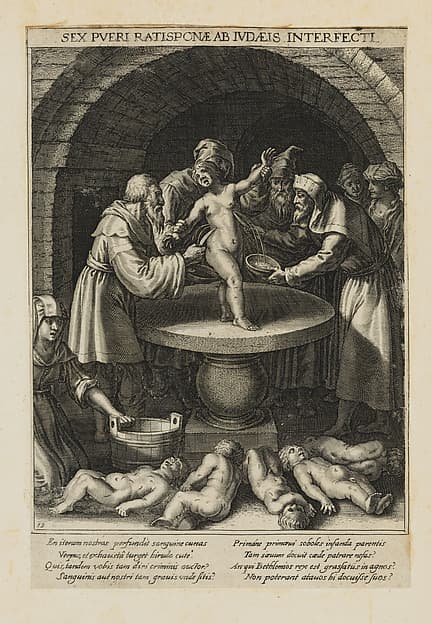
Six Children Killed in Regensburg, from Bavaria Sancta: The Life and Martyrdom of Holy Men and Women (Vol. III)
1627

Saint Noppurga, from Bavaria Sancta: The Life and Martyrdom of Holy Men and Women (Vol. III)
1627

Ruined aqueduct with water spilling from it to a stream below, ships at sea beyond, a man reclining on the ground with three goats in the foreground, from the series 'Six landscapes in Tyrol' after Roelandt Savery
ca. 1600

C. Julius Caesar, from "Twelve Caesars on Horseback"
ca. 1565–87

Caius Caesar Galigula, from "Twelve Caesars on Horseback"
ca. 1565–87

Woodland scene with marshy banks, two men and a dog in profile at left, two-long-necked birds at right, from the series 'Six landscapes in Tyrol' after Roelandt Savery
ca. 1600

A man holding a staff and seated on a tree trunk; with two goats to either side; surrounded by downed trees, foliage, and a stream; from a series of six landscapes after Roelandt Savery
ca. 1600

Cimon and Pero
ca. 1650–90

A Peasant Yawning

Christ on the Cross, from "The Passion of Christ"
ca. 1623

Portrait of Elisabeth of Bourbon, Queen of Spain
ca. 1632–44

Claudius Tiberius Nero, from "Twelve Caesars on Horseback"
ca. 1565–87
More by Jan van der Straet, called Stradanus
Explore other works by this artist
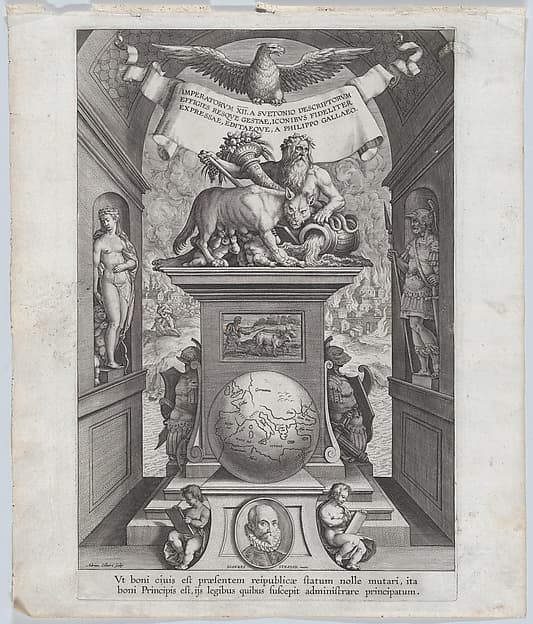
Title page for "Roman Emperors on Horseback"
ca. 1587–89

Plate 12: equestrian statue of Domitian, seen three-quarters to the left, with his stabbing death at right in the background, from 'Roman Emperors on Horseback'
ca. 1587–89

Plate 11: equestrian statue of Titus, seen three-quarters to the right, Mount Vesuvius erupting at left in the background, from 'Roman Emperors on Horseback'
ca. 1587–89
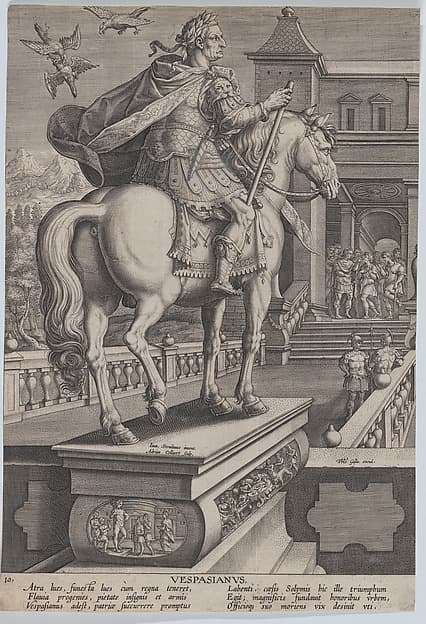
Plate 10: equestrian statue of Vespasian, seen from behind, three birds at upper right with one attacking another, from 'Roman Emperors on Horseback'
ca. 1587–89
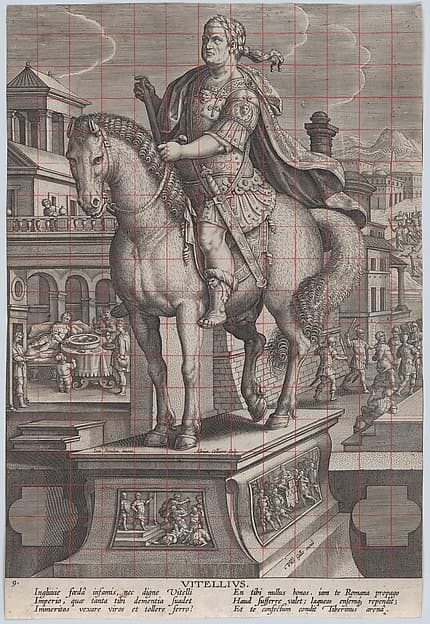
Plate 9: equestrian statue of Vitellius, seen three-quarters to the left, with his death scene in the background at right, his body being thrown into the Tiber at upper right, from 'Roman Emperors on Horseback'
ca. 1587–89
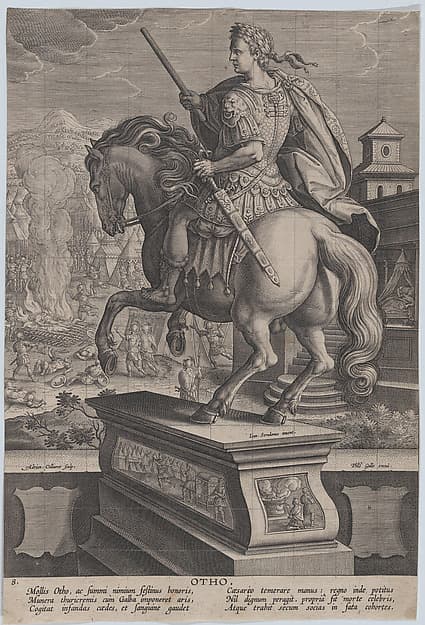
Plate 8: equestrian statue of Otho, seen from behind, his death scene in the background with him stabbing himself at right and the burning of his body at left, from 'Roman Emperors on Horseback'
ca. 1587–89

Plate 7: equestrian statue of Galba, in profile to the left, with a beheading scene in the background, from 'Roman Emperors on Horseback'
ca. 1587–89
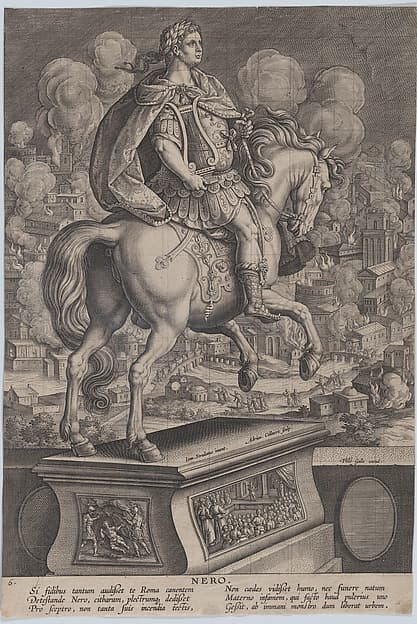
Plate 6: equestrian statue of Nero, seen from behind, the Great Fire of Rome in the background, from 'Roman Emperors on Horseback'
ca. 1587–89
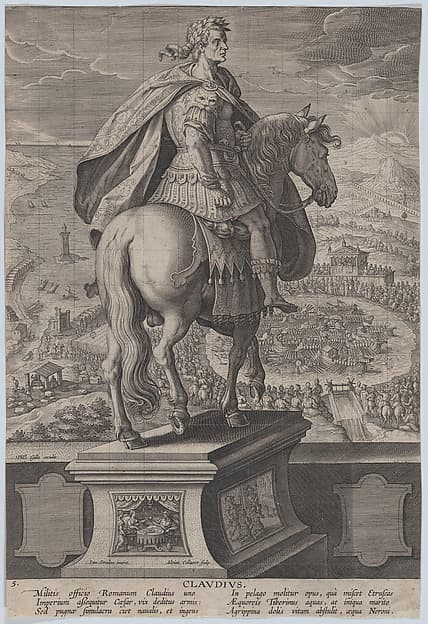
Plate 5: equestrian statue of Claudius, seen from behind, a naval competition at right in the background, from 'Roman Emperors on Horseback'
ca. 1587–89
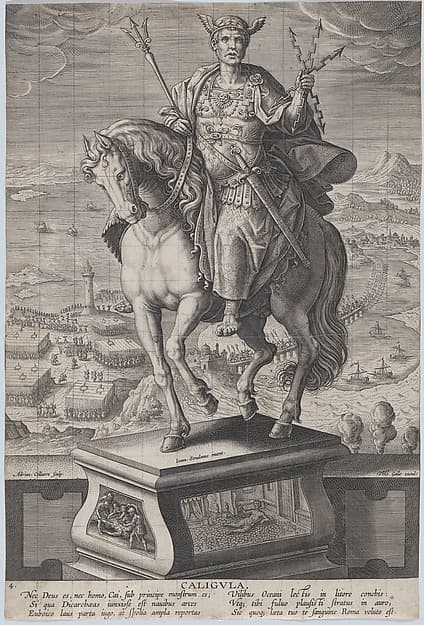
Plate 4: equestrian statue of Caligula, seen three-quarters to the left, wearing a winged helmet and holding double-headed arrows, a military scene in the background, from 'Roman Emperors on Horseback'
ca. 1587–89

Plate 3: equestrian statue of Tiberius, in profile to the left, with a naval landscape on pedestal below, from 'Roman Emperors on Horseback'
ca. 1587–89

Plate 2: equestrian statue of Augustus, holding a globe and seen from behind, with a feast occurring at left in the background, from 'Roman Emperors on Horseback'
ca. 1587–89